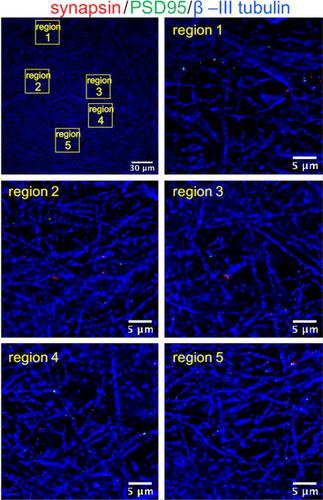当前位置:
X-MOL 学术
›
FEBS Lett.
›
论文详情
Our official English website, www.x-mol.net, welcomes your feedback! (Note: you will need to create a separate account there.)
Synaptic signalling in a network of dopamine neurons: what prevents proper intercellular crosstalk?
FEBS Letters ( IF 3.5 ) Pub Date : 2020-08-30 , DOI: 10.1002/1873-3468.13910 Yixi Chen 1, 2 , Tilo Kunath 1, 2 , Joanna Simpson 3 , Natalie Homer 3 , Sergiy Sylantyev 4
FEBS Letters ( IF 3.5 ) Pub Date : 2020-08-30 , DOI: 10.1002/1873-3468.13910 Yixi Chen 1, 2 , Tilo Kunath 1, 2 , Joanna Simpson 3 , Natalie Homer 3 , Sergiy Sylantyev 4
Affiliation

|
Human embryonic stem cell (hESC)‐derived midbrain dopamine (DA) neurons stand out as a cell source for transplantation with their sustainability and consistency superior to the formerly used fetal tissues. However, multiple studies of DA neurons in culture failed to register action potential (AP) generation upon synaptic input. To test whether this is due to deficiency of NMDA receptor (NMDAR) coagonists released from astroglia, we studied the functional properties of neural receptors in hESC‐derived DA neuronal cultures. We find that, apart from an insufficient amount of coagonists, lack of interneuronal crosstalk is caused by hypofunction of synaptic NMDARs due to their direct inhibition by synaptically released DA. This inhibitory tone is independent of DA receptors and affects the NMDAR coagonist binding site.
中文翻译:

多巴胺神经元网络中的突触信号:是什么阻止了适当的细胞间串扰?
人类胚胎干细胞 (hESC) 衍生的中脑多巴胺 (DA) 神经元作为移植的细胞来源脱颖而出,其可持续性和一致性优于以前使用的胎儿组织。然而,对培养中 DA 神经元的多项研究未能记录突触输入时的动作电位 (AP) 生成。为了测试这是否是由于星形胶质细胞释放的 NMDA 受体 (NMDAR) 共激动剂缺乏所致,我们研究了 hESC 衍生的 DA 神经元培养物中神经受体的功能特性。我们发现,除了辅酶量不足外,由于突触释放的 DA 直接抑制突触 NMDAR 的功能减退,因此缺乏神经元间串扰。这种抑制基调独立于 DA 受体并影响 NMDAR 辅酶激动剂结合位点。
更新日期:2020-08-30
中文翻译:

多巴胺神经元网络中的突触信号:是什么阻止了适当的细胞间串扰?
人类胚胎干细胞 (hESC) 衍生的中脑多巴胺 (DA) 神经元作为移植的细胞来源脱颖而出,其可持续性和一致性优于以前使用的胎儿组织。然而,对培养中 DA 神经元的多项研究未能记录突触输入时的动作电位 (AP) 生成。为了测试这是否是由于星形胶质细胞释放的 NMDA 受体 (NMDAR) 共激动剂缺乏所致,我们研究了 hESC 衍生的 DA 神经元培养物中神经受体的功能特性。我们发现,除了辅酶量不足外,由于突触释放的 DA 直接抑制突触 NMDAR 的功能减退,因此缺乏神经元间串扰。这种抑制基调独立于 DA 受体并影响 NMDAR 辅酶激动剂结合位点。



























 京公网安备 11010802027423号
京公网安备 11010802027423号